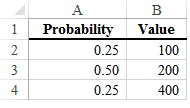Discuss the principles of justice that are to be followed in a system of disciplining or discharging employees.
What will be an ideal response?
The sensitivity of a system for disciplining and possibly terminating employees is obvious, and it is critical that the system be seen as fair. Employees form conclusions about the system's fairness based on the system's outcomes and procedures and the way managers treat employees when carrying out those procedures. The perception of these conclusions results in three important principles: outcome fairness, procedural justice, and interactional justice.
1) Outcome fairness: This type of justice refers to the judgment that the consequences of a decision to employees are just. One employee's consequences should be consistent with other employees' consequences. For example, in a situation where one person loses his or her job while others are not, employees might well conclude that outcomes are not fair because they are inconsistent. The outcome should be proportionate to the behavior. Organizations promote outcome fairness when they clearly communicate policies regarding the consequences of inappropriate behavior. Determinants of outcome fairness or justice include consistent outcomes, knowledge of outcomes, and outcomes in proportion to behavior.
2) Procedural justice: This type of justice focuses on the judgment that fair methods were used to determine the consequences an employee receives. The procedures should be consistent from one person to another, and the manager using them should suppress any personal biases. The procedures should be based on accurate information, not rumors or falsehoods. The procedures should also be correctable, meaning the system includes safeguards, such as channels for appealing a decision or correcting errors. The procedures should take into account the concerns of all the groups affected. Finally, the procedures should be consistent with prevailing ethical standards, such as concerns for privacy and honesty. The determinants of procedural justice include consistent procedures, avoidance of bias, accurate information, a way to correct mistakes, representation of all interests, and ethical standards.
3) Interactional justice: This type of justice is a judgment that the organization carried out its actions in a way that took the employee's feelings into account. It is a judgment about the ways in which managers interact with their employees. A disciplinary action meets the standards of interactional justice if the manager explains to the employee how the action is procedurally just. The manager should listen to the employee. The manager should also treat the employee with dignity and respect and should empathize with the employee's feelings. Even when a manager discharges an employee for doing something wrong, the manager can speak politely and state the reasons for the action. These efforts are especially important when managing an employee who has a high level of hostility and is at greater risk of responding with violence. The four determinants of interactional justice are explanation, respectful treatment, consideration, and empathy.
You might also like to view...
Suppose you buy an inflation-indexed bond that will adjust with inflation and thus pay you $1,500 in real (inflation-adjusted) terms each year for the next five years, plus your real principal of $75,000 at the end of the fifth year. The nominal interest rate is 5 percent and the expected inflation rate is 3 percent. What is the present value of the bond? (Round off your answer to the nearest thousand dollars and pick the answer closest to the one you calculate.)
A. $65,000 B. $70,000 C. $74,000 D. $75,000
Use the function ExpValue, defined below. If you apply this function to the data in the image, where Values = B2:B4, and Weights = A2:A4, what is the value of EV when t=2?

Public Function ExpValue(Values As Range, Weights As Range)
Dim t As Integer, VarCount As Integer, EV As Single
VarCount = Values.Count
EV = 0
For t = 1 To VarCount
EV = EV + Values(t) * Weights(t)
Next t
ExpValue = EV
End Function
a) $25
b) $50
c) $125
d) $225
e) $250
Super-variable costing is a costing method mat treats direct labor and manufacturing overhead costs as product costs.
Answer the following statement true (T) or false (F)
Which of the following is NOT a part of a syllogism?
a. An introduction b. A major premise c. A minor premise d. A conclusion